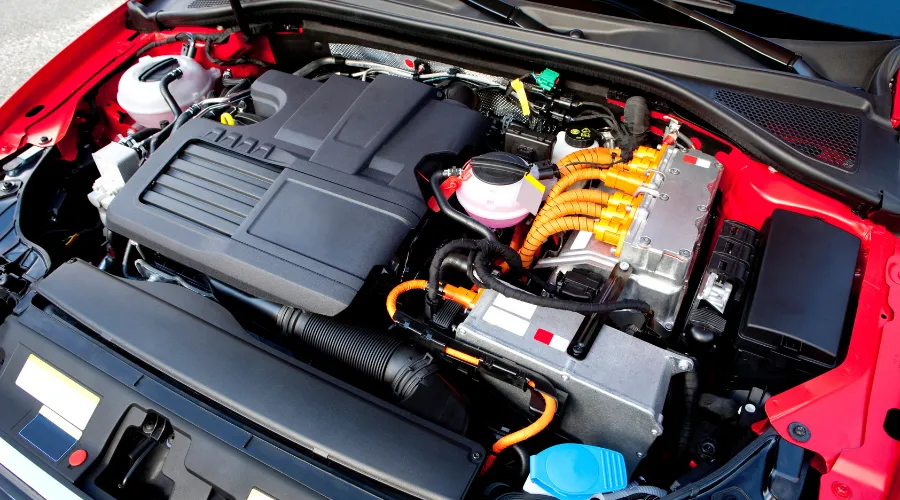Hybrid Technology: How It Works and Its Advantages

Anúncios
In an era where sustainability and efficiency dominate global conversations, hybrid technology has emerged as a revolutionary force, reshaping industries from automotive to energy.
By seamlessly integrating traditional systems with cutting-edge innovations, this approach offers a balanced solution to modern challenges.
But how does it work, and what makes it so advantageous?
Anúncios
Let’s dive into the mechanics, benefits, and future potential of this transformative technology.
Understanding Hybrid Technology: The Basics
At its core, hybrid technology combines two or more distinct power sources to achieve optimal performance.
In the automotive sector, for instance, it merges internal combustion engines with electric motors, creating vehicles that are both fuel-efficient and environmentally friendly.
This dual-system approach isn’t limited to cars; it’s also revolutionizing renewable energy systems, consumer electronics, and even industrial machinery.
The magic lies in the synergy between the components.
For example, in hybrid vehicles, the electric motor handles low-speed driving, while the gasoline engine kicks in for higher speeds or when additional power is needed.
This dynamic interplay reduces fuel consumption and emissions without compromising performance.
Moreover, hybrid technology allows manufacturers to meet increasingly stringent emissions regulations while still delivering powerful vehicles.
As the demand for sustainable solutions grows, understanding the fundamentals of hybrid technology becomes essential for consumers and industry professionals alike.
+ Electric Cars 2025: Discover the Models That Will Dominate the Roads
How Technology Works: A Closer Look
To truly appreciate hybrid technology, it’s essential to understand its operational framework.
Here’s a simplified breakdown:
- Energy Management Systems: Advanced software monitors and controls the flow of energy between the power sources, ensuring efficiency.
- Regenerative Braking: This feature captures energy typically lost during braking and converts it into electricity, which is stored in the battery for later use.
- Automatic Start/Stop: When the vehicle is idle, the engine shuts off automatically, reducing unnecessary fuel consumption.
These mechanisms work in harmony to deliver a driving experience that’s both powerful and sustainable.
In addition, hybrid vehicles often feature multiple driving modes, allowing drivers to select the most efficient option based on their needs.
This flexibility not only enhances the driving experience but also maximizes energy efficiency, making hybrids an attractive choice for a wide range of consumers.

The Advantages of Hybrid Technology
The benefits of hybrid technology extend far beyond fuel savings.
Here’s why it’s gaining traction across industries:
1. Environmental Impact
Hybrid systems significantly reduce greenhouse gas emissions.
According to a 2022 study by the International Council on Clean Transportation, hybrid vehicles emit up to 30% less CO2 compared to traditional gasoline-powered cars.
This reduction is a critical step toward combating climate change.
Moreover, as more consumers become environmentally conscious, the demand for hybrid vehicles is expected to rise, further driving innovation in this field.
2. Cost Efficiency
While the initial investment in hybrid technology may be higher, the long-term savings are substantial.
Lower fuel costs, tax incentives, and reduced maintenance expenses make it a financially sound choice.
In fact, many governments around the world are offering incentives to encourage the adoption of hybrid vehicles, making them even more appealing to consumers.
3. Enhanced Performance
Contrary to popular belief, hybrid systems don’t sacrifice power for efficiency.
The combination of electric motors and combustion engines delivers instant torque, resulting in smoother acceleration and a more responsive driving experience.
This characteristic makes hybrids not only practical but also enjoyable to drive, appealing to a broader audience.
4. Versatility
Hybrid technology isn’t confined to automobiles.
It’s being used in renewable energy systems, such as solar-wind hybrids, to provide consistent power generation regardless of weather conditions.
This versatility highlights the adaptability of hybrid technology across various fields, paving the way for innovative solutions in energy management and consumption.

++ Self-Driving Cars: Has the Future of Mobility Arrived?
Hybrid Technology in Action: Real-World Applications
From urban commuting to industrial operations, hybrid technology is making waves across various sectors.
Let’s explore some compelling examples:
1. Automotive Industry
Hybrid vehicles like the Toyota Prius and Ford Escape Hybrid have become household names, offering consumers a greener alternative without compromising on performance.
These models demonstrate how hybrid technology can blend efficiency with reliability, appealing to a wide range of drivers.
2. Renewable Energy
Hybrid solar-wind systems are gaining popularity in remote areas, providing reliable electricity where traditional grids can’t reach.
These systems not only enhance energy security but also contribute to local economies by providing sustainable power sources.
3. Consumer Electronics
Devices like hybrid laptops, which combine powerful processors with energy-efficient components, are setting new standards for portable computing.
This trend reflects a broader movement toward sustainability in technology, as consumers increasingly seek products that minimize their environmental footprint.
The Future of Hybrid Technology
As technology continues to evolve, so does the potential of hybrid systems.
Innovations like solid-state batteries and AI-driven energy management are poised to take hybrid technology to new heights.
Moreover, the growing emphasis on sustainability ensures that this approach will remain at the forefront of technological advancements.
As industries grapple with the challenges of climate change and resource scarcity, hybrid technology offers a viable path forward.
By leveraging multiple energy sources, businesses can enhance their resilience and adaptability in an ever-changing market landscape.
Tables: Comparing Hybrid vs. Traditional Systems
Table 1: Fuel Efficiency Comparison
| Vehicle Type | Average MPG (Miles Per Gallon) |
|---|---|
| Traditional Gasoline | 25 |
| Hybrid | 50 |
Table 2: Environmental Impact
| Vehicle Type | CO2 Emissions (Tons/Year) |
|---|---|
| Traditional Gasoline | 4.6 |
| Hybrid | 3.2 |
For more insights into the future of hybrid technology, check out this article.
Conclusion: Why Hybrid Technology Matters
Hybrid technology represents a pivotal shift in how we approach energy consumption and environmental stewardship.
By blending the best of both worlds, it offers a practical, efficient, and sustainable solution for the challenges of today and tomorrow.
Whether you’re a tech enthusiast, an eco-conscious consumer, or simply someone looking to save on fuel costs, hybrid technology has something to offer.
As we move toward a greener future, embracing innovations like hybrid systems isn’t just an option—it’s a necessity.
The question isn’t whether hybrid technology will dominate the landscape, but how quickly we can adapt to its transformative potential.
This article not only highlights the mechanics and benefits of hybrid technology but also underscores its relevance in a rapidly changing world.
By integrating data, real-world applications, and forward-looking insights, it provides a comprehensive overview that’s both informative and engaging.
